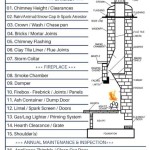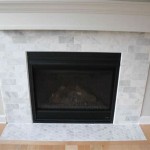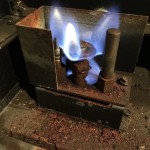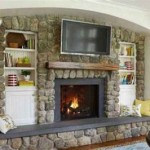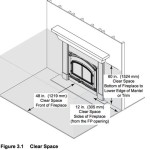Propane Fireplace Vent Free: A Comprehensive Guide
Propane fireplaces are a popular choice for homeowners seeking to add warmth and ambiance to their living spaces. Vent-free propane fireplaces offer a unique advantage by eliminating the need for traditional venting systems, simplifying installation and offering greater design flexibility. However, choosing the right vent-free propane fireplace and understanding its implications is crucial for safety and functionality. This article provides a comprehensive guide to vent-free propane fireplaces, covering their advantages and limitations, key considerations for selection, and essential safety guidelines.
Understanding Vent-Free Propane Fireplaces
Vent-free propane fireplaces operate on a principle of combustion that produces minimal byproducts and exhaust. Unlike traditional vented fireplaces that rely on chimneys to expel smoke and gases, vent-free models utilize a sealed combustion chamber designed to release heat into the room while safely minimizing emissions. These fireplaces are typically equipped with oxygen depletion sensors that automatically shut off the appliance if oxygen levels drop below a safe threshold, preventing potential hazards.
Advantages of Vent-Free Propane Fireplaces
Vent-free propane fireplaces offer several compelling advantages over their vented counterparts:
- Installation Simplicity: The absence of venting requirements significantly simplifies installation, as it eliminates the need for costly and time-consuming chimney construction or modifications. This allows for greater flexibility in placement within a room.
- Design Flexibility: Vent-free fireplaces come in various designs and styles to complement any décor. Their compact size and lack of vent limitations allow for installation in spaces where traditional fireplaces might be impractical.
- High Heat Efficiency: Vent-free fireplaces are engineered to maximize heat efficiency, directing almost all the heat generated by combustion into the room. This translates to better heating performance and potential energy savings.
- Reduced Maintenance: Vent-free fireplaces typically require minimal maintenance, as they do not involve cleaning chimneys or removing soot buildup.
Key Considerations for Choosing a Vent-Free Propane Fireplace
While vent-free propane fireplaces offer significant advantages, several factors should be considered before making a purchase:
- Room Size: Vent-free fireplaces are designed for specific room sizes based on their heat output. Choosing a fireplace with BTU ratings appropriate for your space is crucial for optimal performance and safety.
- Safety Features: Prioritize fireplaces equipped with safety features such as oxygen depletion sensors, automatic shut-off mechanisms, and pilot light safety systems. Carefully read the manufacturer's instructions and follow all safety guidelines.
- Installation Requirements: While vent-free fireplaces offer installation flexibility, specific requirements such as adequate ventilation and clearance from combustible materials must be met. Consult with a qualified installer or professional for proper installation.
- Local Building Codes: Ensure that the vent-free propane fireplace you choose complies with local building codes and regulations. Local authorities may have specific requirements for fireplace installation and operation.
Safety Guidelines for Vent-Free Propane Fireplaces
Safety should always be a top priority when using vent-free propane fireplaces. The following guidelines are essential for safe operation:
- Proper Installation: Ensure the fireplace is installed correctly according to the manufacturer's instructions and local building codes. Consult with a qualified installer or professional for installation.
- Ventilation: Adequate fresh air supply is crucial for safe operation. Ensure sufficient ventilation in the room where the fireplace is installed, following the manufacturer's recommendations.
- Oxygen Depletion: Never run the fireplace in inadequately ventilated spaces, as oxygen depletion can occur. Be aware of the signs of oxygen depletion (headache, drowsiness) and immediately stop using the fireplace if these symptoms arise.
- Combustible Materials: Maintain a safe clearance between the fireplace and any combustible materials, such as furniture, draperies, and walls. Always follow the manufacturer's clearance recommendations.
- Regular Maintenance: Perform routine maintenance checks on the fireplace, ensuring the gas connections, controls, and combustion chamber are in good working order. Refer to the manufacturer's maintenance guide for specific instructions.
Vent-free propane fireplaces offer a convenient and aesthetically pleasing option for home heating and ambiance, but it is crucial to understand the implications, safety considerations, and local regulations before choosing and operating these appliances. Prioritizing safety with proper installation, ventilation, and regular maintenance will ensure a pleasant and safe experience.

Radiance Vent Free Gas Stove The Place
:max_bytes(150000):strip_icc()/ventless-gas-fireplaces-4160746-hero-f9d4bdcd9bd446eb84406de306f790ba.jpg?strip=all)
How To Pick Out A Ventless Gas Fireplace

50 Free Standing Ventless Gas Fireplace Visualhunt

Vent Free Inserts White Mountain Hearth

Ventless Gas Fireplace Propane

Duluth Forge 1200 Sq Ft Dual Burner Vent Free Corner Or Flat Wall Natural And Liquid Propane Gas Stove At Com

Star Vent Free Gas Stove The Place

50 Free Standing Ventless Gas Fireplace Visualhunt

Vent Free White Mountain Hearth

Considering A Ventless Gas Fireplace Here S What You Need To Know Bob Vila
Related Posts


